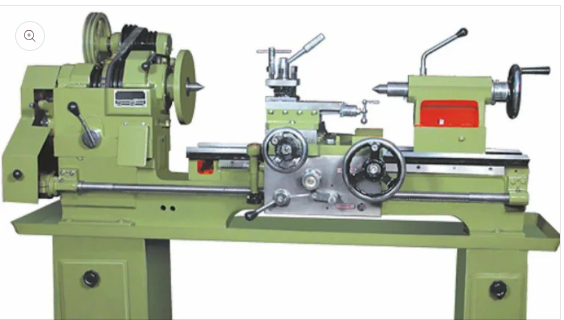A lathe machine is one of the most essential tools in the manufacturing and metalworking industries. It is used to shape, cut, drill, and deform materials like metal, wood, and plastic into desired shapes. The lathe machine operates by rotating the workpiece against a cutting tool, allowing for precision machining.
In this guide, we will explore the different types of lathe machines, their operations, components, and benefits. Whether you’re a beginner or an experienced machinist, this article will provide valuable insights into this versatile machine.
What is a Lathe Machine?
A lathe machine is a machine tool that rotates a workpiece on its axis to perform various operations such as cutting, sanding, knurling, drilling, or deformation. The machine holds the workpiece firmly while a cutting tool moves linearly to remove material and create symmetrical objects.

Key Components of a Lathe Machine
- Bed – The base that supports all other parts.
- Headstock – Houses the spindle and motor, providing rotational power.
- Tailstock – Supports the other end of the workpiece for stability.
- Carriage – Moves the cutting tool along the workpiece.
- Tool Post – Holds the cutting tool securely.
- Chuck – Grips the workpiece firmly during rotation.
Types of Lathe Machines
There are several types of lathe machines, each designed for specific applications.
1. Engine Lathe
- Most common type of lathe machine.
- Used for general-purpose turning, facing, and threading.
- Operates at various speeds for different materials.
2. Turret Lathe
- Features a hexagonal turret for multiple tool attachments.
- Ideal for mass production due to quick tool changes.
3. CNC Lathe
- Computer-controlled for high precision.
- Used in automated manufacturing processes.
4. Bench Lathe
- Small-sized, mounted on workbenches.
- Suitable for lightweight and precision tasks.
5. Wood Lathe
- Specifically designed for woodworking.
- Used for crafting furniture, bowls, and decorative items.
Common Lathe Machine Operations
A lathe machine performs various operations to shape materials accurately.
1. Turning
- Removes excess material to create cylindrical shapes.
- Done using a single-point cutting tool.
2. Facing
- Flattens the end of the workpiece.
- Ensures a smooth and even surface.
3. Drilling
- Creates holes in the workpiece using a drill bit.
4. Knurling
- Produces a textured grip on handles or tools.
5. Threading
- Cuts screw threads on bolts and nuts.
Advantages of Using a Lathe Machine
The lathe machine offers numerous benefits in manufacturing and fabrication.
1. High Precision
- Delivers accurate and consistent results.
2. Versatility
- Can perform multiple operations like cutting, drilling, and threading.
3. Cost-Effective Production
- Reduces manual labor and increases efficiency.
4. Customization
- Allows for the creation of complex and custom parts.
5. Durability
- Built to withstand heavy-duty operations.
How to Maintain a Lathe Machine?
Proper maintenance ensures the longevity of a lathe machine.
- Regular Lubrication – Prevents wear and tear.
- Cleaning – Removes metal chips and debris.
- Inspection – Checks for loose bolts or misalignments.
- Sharp Tools – Ensures smooth and efficient cutting.
Conclusion
The lathe machine is an indispensable tool in manufacturing, offering precision, versatility, and efficiency. Whether used for metalworking or woodworking, understanding its types, operations, and maintenance can enhance productivity and product quality.
Investing in a high-quality lathe machine can significantly improve machining capabilities, making it a valuable asset for workshops and industries.
FAQs About Lathe Machine
Q1. What materials can a lathe machine work on?
A lathe machine can work on metals, wood, plastics, and composites.
Q2. What is the difference between a CNC lathe and a manual lathe?
A CNC lathe is automated and computer-controlled, while a manual lathe requires hands-on operation.
Q3. How do I choose the right lathe machine?
Consider factors like workpiece size, material type, and required precision before selecting a lathe machine.
By following this guide, you can maximize the efficiency of your lathe machine and achieve superior machining results.



